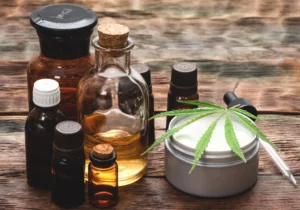For most people, knowledge of LSD is limited to pop culture references, especially those from the 1960s and 1970s counterculture. Thanks to portrayals in movies and television, even people who never have tried the drug know what an acid trip is. But there’s so much more to LSD than these stereotyped images. A modern view of LSD shows how it is no longer a recreational drug but medicine that may help people treat depression, PTSD, addiction, and more.
What Is LSD?
[Lysergic acid diethylamide]https://www.ncbi.nlm.nih.gov/books/NBK482407/) is better known as LSD. It is also commonly known as acid, L, tabs, Lucy, and doses. The semi-synthetic compound belongs to the psychedelic class of drugs derived from one of the active ingredients in ergot, a fungus found in tainted rye.
It was synthesized in 1938 by Swiss chemist Albert Hofmann at the Sandoz laboratories in Basel, Switzerland. Initially, the intention for development was as a respiratory and circulatory stimulant. After development, it was put on the shelves. It was not until five years later, when Hofman accidentally absorbed a small amount of the drug, that he discovered the psychedelic qualities of LSD.
What Are the Effects?
Highly potent even in small doses, LSD varies in its effects
Physiological
Physiological effects typically include pupil dilation, reduced appetite, wakefulness, increased heart rate, increased body temperature, and sweating.
Sensory
It affects our sensory perception while distorting and heightening the senses. Many consumers report a sharper sense of smell, heightened taste, and a greater appreciation for sounds and particularly music. Some people experience synesthesia, where senses merge and vvid, colorful visions, and auditory hallucinations are common effects of LSD. Many people comment on LSD’s ability to alter and expand consciousness and to overide the default mode network.
Psychological and Emotional
How it impacts people psychologically depends on the dose consumed and in part on the user’s present mental state, emotions, and environment. Some claim to have life-altering spiritual experiences.
At low to moderate amounts, positive and neutral effects predominate. The possibility of a “bad trip” increases as dosage increases. Commonly reported effects include:
Positive:
- Creativity
- Visual hallucinations
- Ego dissolution
- Sense of connectedness to the world
- Euphoria
Neutral:
- Altered consciousness
- Distorted sense of time
- Inability to focus
- Unusual thoughts
Negative:
- Paranoia
- Anxiety
- Overwhelming feelings
- A sense of being lost in space and time
Promising Therapeutic Uses From Past and Present Research
Since its discovery, people have used LSD for self-exploration and spiritual growth. Therapists hope it will prove to be useful in reducing anxiety, treating depression, and relieving addictive tendencies.
1950s and 1960s
Early research focused on the mystical experiences inspired by LSD or its use as a psychoanalytical tool to explore the unconscious. LSD allowed patients to observe their unconscious drives and motives while retaining part of their ego in therapeutic settings. Therapists believed LSD held promise in treating addiction, depression, obsessive-compulsive disorder, and end-of-life anxiety.
1980s Swiss
In a backlash to the counterculture glorification of LSD in the 1960s and in response to Timothy Leary’s campaign to normalize and mainstream acid’s use, research was banned from the early 1970s to the mid-1980s. In 1988, the Swiss government granted permission to a group of therapists to research therapeutic uses of LSD.
Participants in the study held different diagnoses and reasons for seeking treatment; these included eating disorders, addiction, psychosis, personality disorders, adjustment disorders, depression, anxiety, and sexual dysfunction.
All who received psychedelic dosing treatments were involved in group therapy and one-on-one therapy. About 90 percent of participants reported good or slight improvement on their therapy-related issues. The therapists observed no complications.
Recent LSD Studies
Findings from more recent research on LSD include:
- LSD has a success rate in treating alcoholism of 81 to 100 percent.
- Two weeks after taking LSD, healthy individuals were more open and had a more positive outlook.
- In combination with psychotherapy sessions, LSD reduced anxiety associated with life-threatening conditions such as cancer.
- A large study of more than 130,000 people found no association between psychedelic use and mental health disorders, psychological distress, or suicidal thoughts.
- LSD enhanced people’s ability to feel empathy and their desire to be with other people.
Possible Risks of LSD
Some people have reported bad acid trips where they experienced overwhelming feelings, heightened fear, a sense of losing their minds, and paranoia. However, there are no proven long-term adverse side effects of LSD use and no documented deaths in the United States. The risk of hurting oneself is very low, and LSD does not cause long-term physical dependency or addiction.
Legality of LSD
LSD’s classification as a Schedule I drug by the U.S. government makes its manufacture, possession, distribution, and use illegal on a federal level. In light of the successes in the limited studies, researchers intend to request the drug be rescheduled to allow for treatment for end-of-life anxiety.
Get Your Medical Document & Purchase Medical Cannabis
It’s easy to get your medical document with the online Telehealth service HelloMD. Register, pay, and receive an online medical consultation with a licensed practitioner and start purchasing medical cannabis today.
Photo by Dewang Gupta on Unsplash






